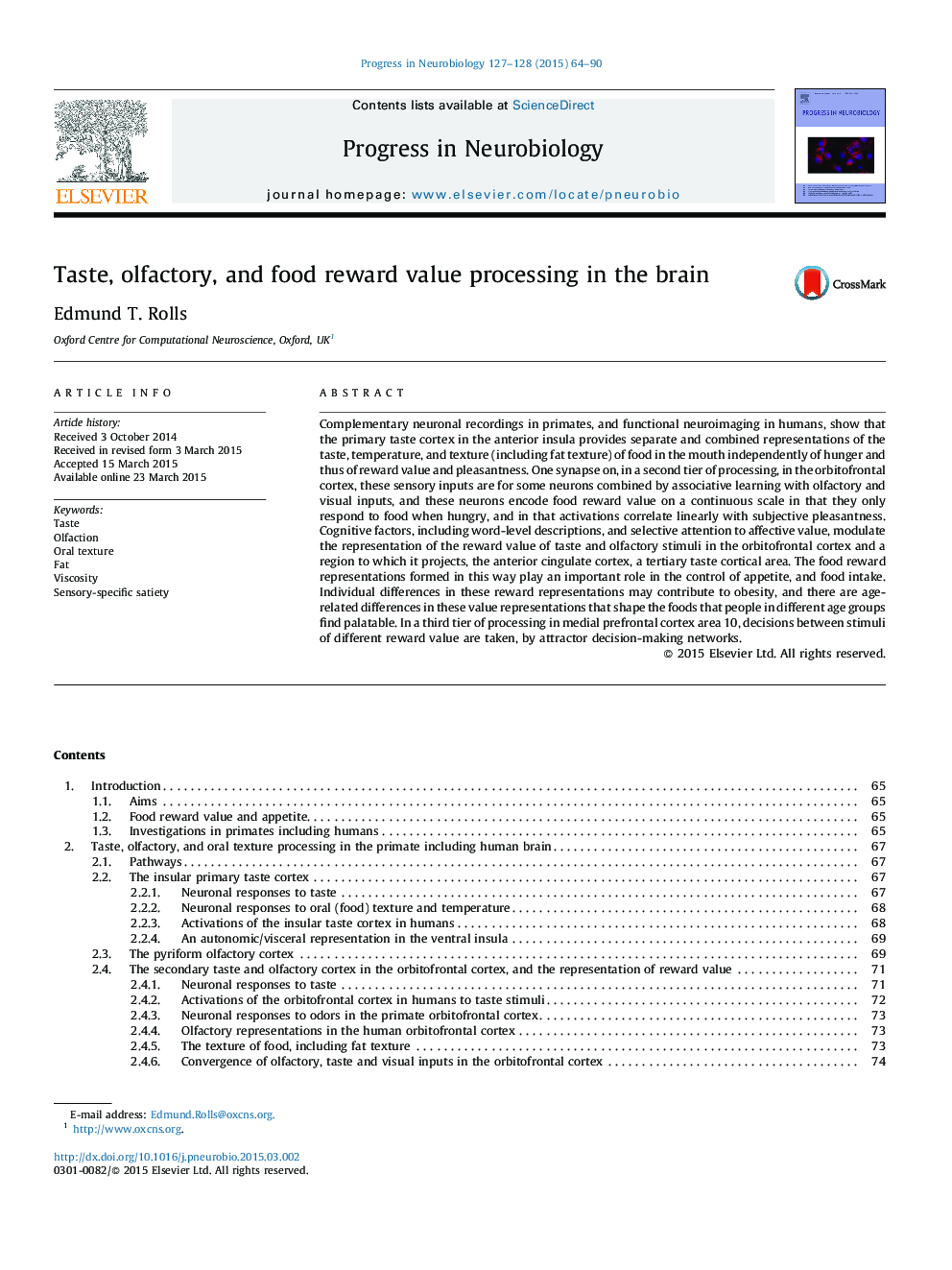| Article ID | Journal | Published Year | Pages | File Type |
|---|---|---|---|---|
| 4353285 | Progress in Neurobiology | 2015 | 27 Pages |
•Review of taste and olfactory processing in the brain.•Emphasizes research on primates including humans.•Includes effects of cognition and attention.•Includes reward value representation.•Includes relevance to food intake.
Complementary neuronal recordings in primates, and functional neuroimaging in humans, show that the primary taste cortex in the anterior insula provides separate and combined representations of the taste, temperature, and texture (including fat texture) of food in the mouth independently of hunger and thus of reward value and pleasantness. One synapse on, in a second tier of processing, in the orbitofrontal cortex, these sensory inputs are for some neurons combined by associative learning with olfactory and visual inputs, and these neurons encode food reward value on a continuous scale in that they only respond to food when hungry, and in that activations correlate linearly with subjective pleasantness. Cognitive factors, including word-level descriptions, and selective attention to affective value, modulate the representation of the reward value of taste and olfactory stimuli in the orbitofrontal cortex and a region to which it projects, the anterior cingulate cortex, a tertiary taste cortical area. The food reward representations formed in this way play an important role in the control of appetite, and food intake. Individual differences in these reward representations may contribute to obesity, and there are age-related differences in these value representations that shape the foods that people in different age groups find palatable. In a third tier of processing in medial prefrontal cortex area 10, decisions between stimuli of different reward value are taken, by attractor decision-making networks.
